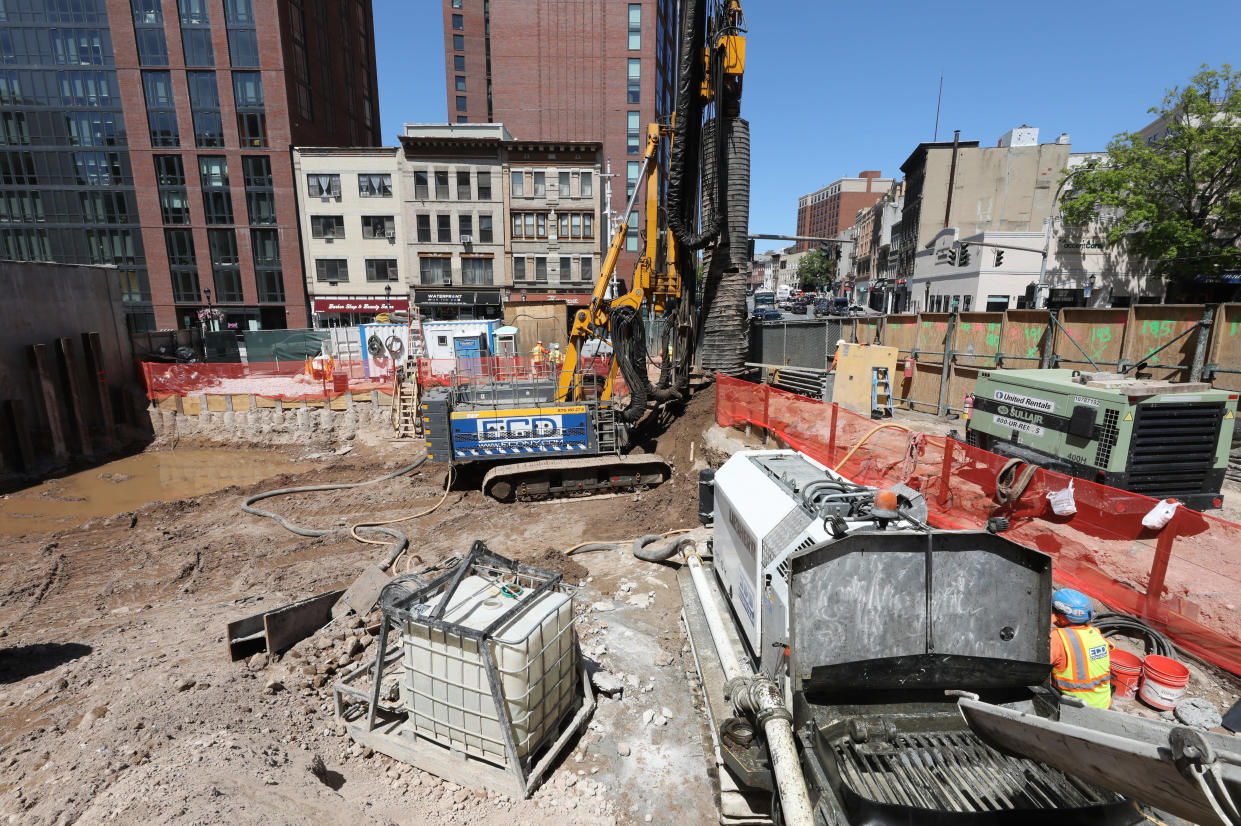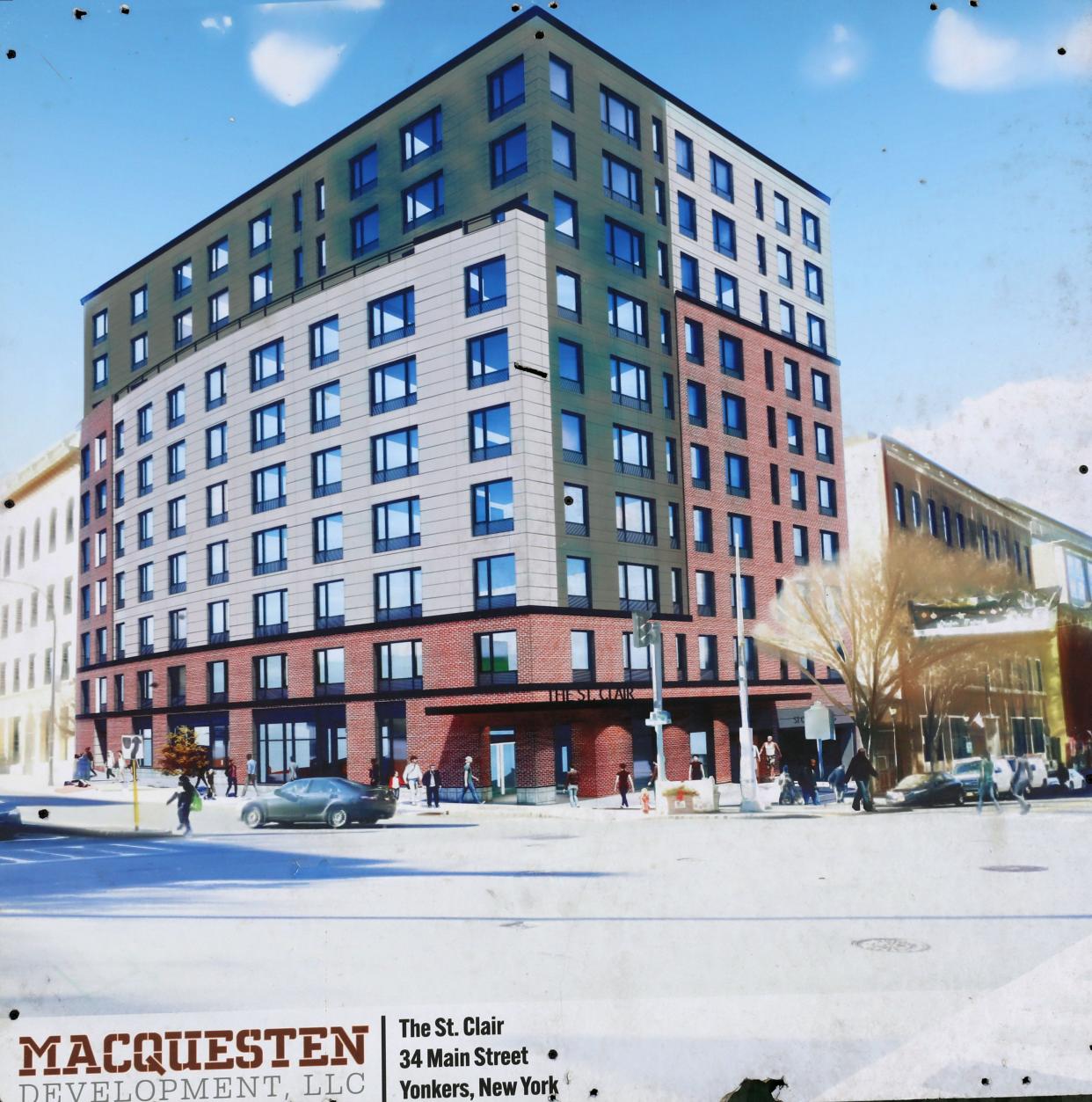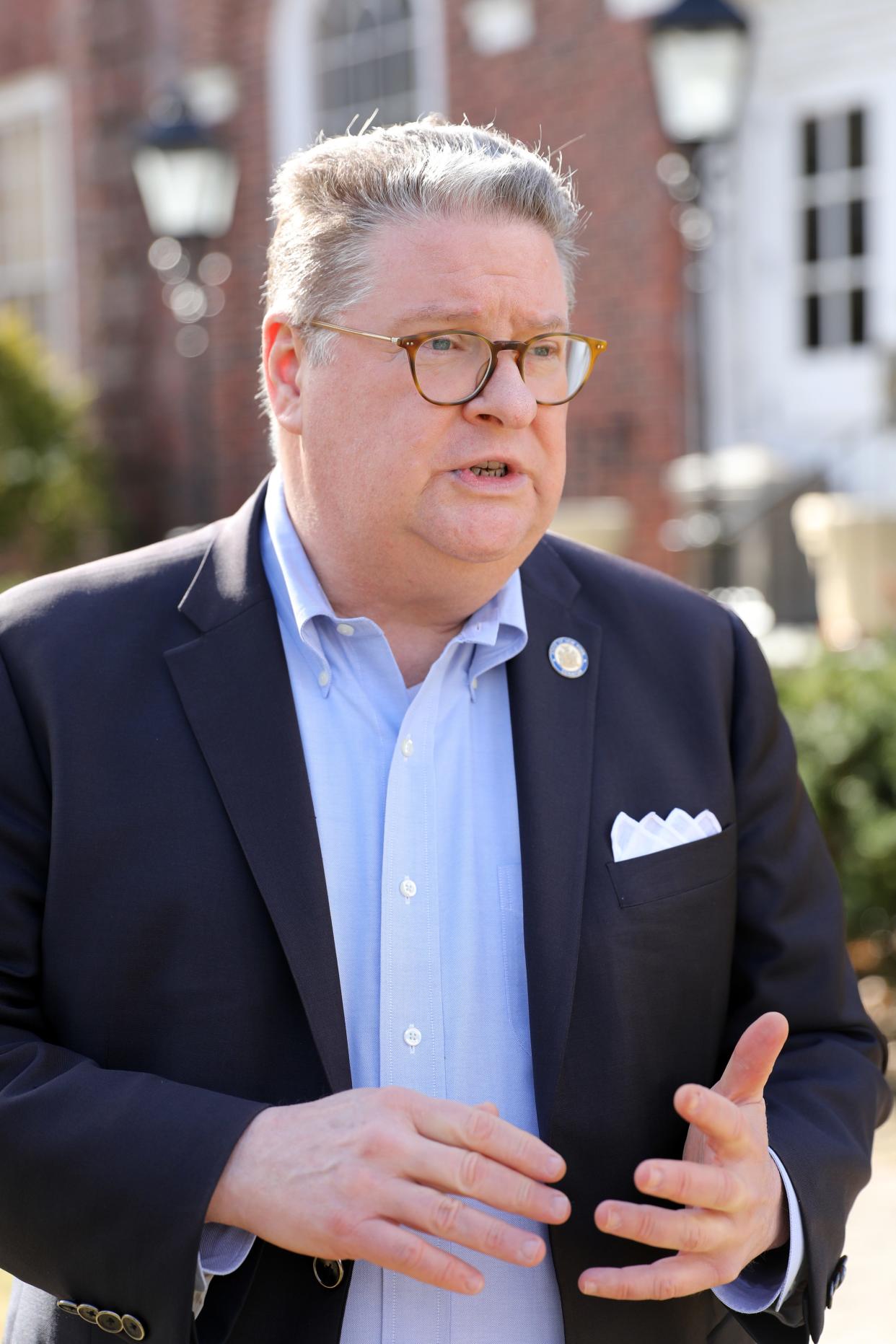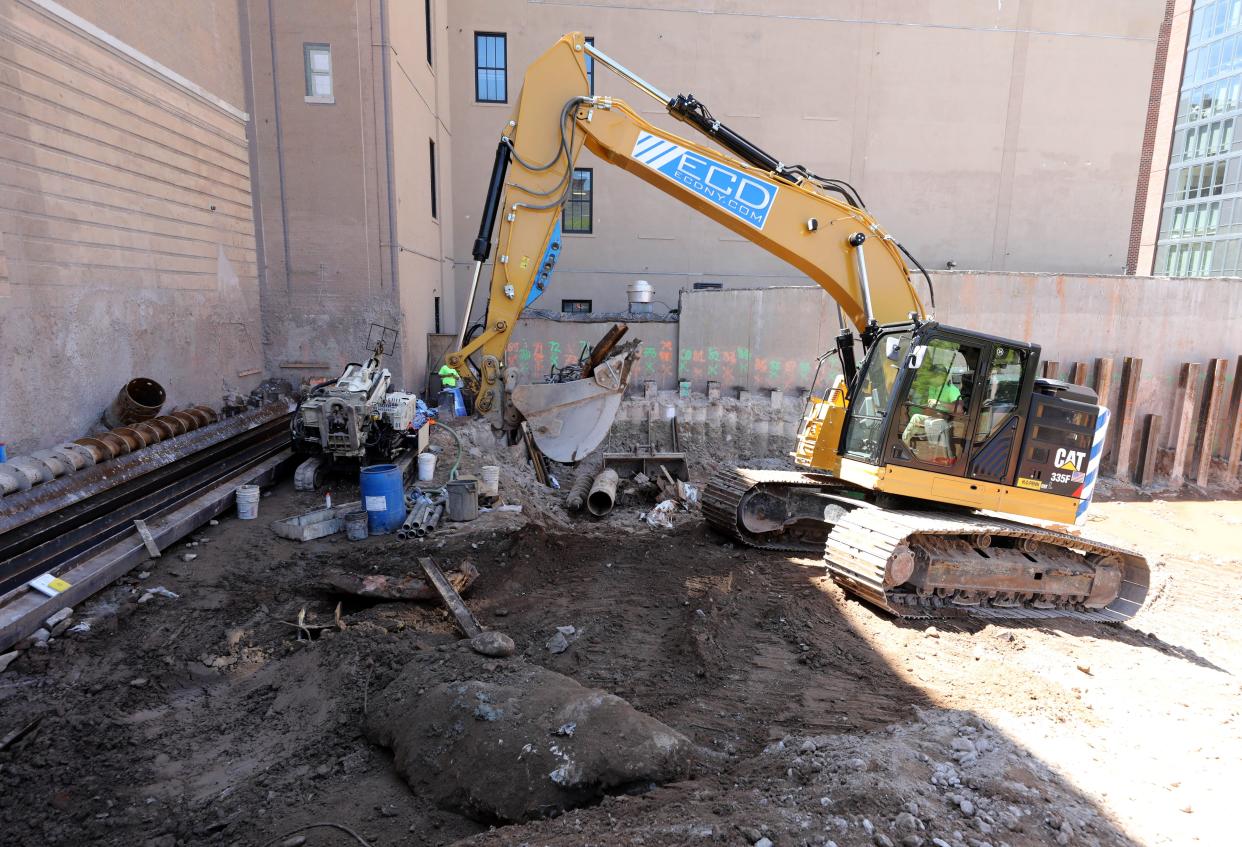NY struggling to spur affordable housing growth. What are the newest ideas?
Gov. Kathy Hochul has pitched one idea after another to build more affordable housing for New Yorkers, making it a central quest. But so far she's had limited success, as spiraling rents and house prices threaten to drive away residents and deprive businesses of workers.
Last year, her plan to tackle New York's housing crisis was blocked by resistance in the suburbs, where officials rebelled against local mandates she wanted to set to spur construction.
This year, she tried a softer approach and found common ground with state lawmakers, forging new policies in last month's budget that coax rather than demand. Among them: optional tax incentives to spur new affordable apartments across the state, whether in high-rise buildings or as converted spaces in existing houses.
The goal is to address a home shortage that keeps driving up costs, putting them beyond reach for many. In one warning signal last month, the Westchester County village of Mamaroneck issued a report saying its median home sale price had topped $1 million last year and nearly half of the village's tenants were spending more than a third of their income on rent.
Part of Hochul's strategy last year was to propose annual growth targets for every municipality and mandatory zoning for dense housing near commuter train stations in New York City's suburbs. That didn't go over well with municipal leaders and their state representatives, who bristled at Albany's interference in local decisions.
Hochul and housing advocates insisted then that incentives alone wouldn't work, that the state needed sticks in addition to carrots to overcome exclusionary zoning practices and slow development reviews by municipalities.
But lawmakers rejected the sticks. And now New York is about to test an all-carrots approach.
Last year's proposal sought 800,000 new homes in 10 years, twice the building pace of the previous decade. This year, the Hochul administration stated no goal for the new policies — and didn't respond when the USA Today Network asked what it was.

According to Census Bureau data, some 49,000 home-building permits were issued in New York last year, continuing the pace that Hochul had hoped to double.
Many housing steps in the budget pertained strictly to New York City, such as developer tax incentives and conversion of empty office buildings into homes. Here's a closer look at the policies intended to multiply homes in the rest of the state.
NY to trade tax breaks for more apartments
One feature was a new tax incentive to build affordable apartments outside New York City.
It would be optional for each municipality. Those that choose to offer it could slash property taxes for new apartment buildings with at least 10 units if rents are set within reach for people earning 60% to 80% of the area's median income, on average.
Developers would pay no property taxes at all for up to three years during construction. After that, they would start with a 96% tax exemption and incrementally pay greater portions of their tax bills over 25 or 30 years, depending on how many apartments are affordable.
"That's a very steep tax exemption, and it is a very significant inducement to do projects," said Joe Apicella, executive vice president of MacQuesten Development, a Westchester-based builder focused on affordable housing.
On a vacant city lot in Yonkers, Apicella's company is now erecting a 10-story building with 76 apartments, all of which will be affordably priced. The St. Clair project benefited from a 30-year property-tax abatement, granted by the Yonkers Industrial Development Agency and similar to the incentive now made possible by the state budget.
But the state's new tax break is even better, particularly its three-year tax reprieve during construction, Apicella said.

He predicted it would entice developers to undertake projects they might otherwise forgo. Anything that offsets the daunting costs they now face — inflation-driven price increases, high interest rates, environmental cleanups — "is a plus," he said.
Sweetening the deal for accessory units in basements, garages
Two years ago, Hochul and some lawmakers pursued an earlier mandate idea: a statewide requirement that all towns let homeowners open accessory apartments by converting basements, garages or other areas of their property. The double goal was to expand affordable rental options while giving homeowners added income to keep pace with their own expenses.
That idea got shot down as well, based on home-rule objections similar to those that sank last year's plan.
But what emerged in this year's budget was a new, incentive-based approach. Municipalities will be given the option to grant tax exemptions for new accessory apartments, sparing homeowners from paying any property taxes on them for five years and then phasing in taxes over the next five.
Sen. Pete Harckham, a Westchester County lawmaker who helped lead the push for accessory apartments, had a revised version of his bill in this year's budget negotiations. He said the opt-in approach that resulted was different than what he envisioned, but a laudable outcome of the give-and-take.
"This is how good legislation is done," Harckham said. "It's compromise."
He pointed out that more communities have embraced the concept of accessory apartments on their own without a state mandate, including six Westchester municipalities that passed laws last year to authorize and regulate them. He credits the 2022 push, saying, "We're seeing the fruits of that effort already."

The lure of state cash has also been a driver.
The state budgeted $85 million in 2022 to pay for construction of accessory apartments, and has so far distributed $59 million to build about 560 units. For homeowners living outside New York City, state funding covers up to $125,000 in costs per unit.
Funds for the optional Plus One ADU program have so far been distributed in about 50 places around the state. In Westchester, the program is run by Habitat for Humanity and seven municipalities are participating or plan to join: Bedford, Dobbs Ferry, Hastings-on-Hudson, Irvington, Yorktown, Cortlandt and Croton-on-Hudson.
ADU push: Should NY make towns and villages allow accessory apartments to ease housing crisis?
Luring growth with grants
After the mandate proposal failed last year, Hochul took a few steps she could do on her own to spur housing, without legislative approval. One was to add a new qualification to certain state grant programs, giving a preference to communities that meet the housing growth targets she had hoped to mandate.
This year's budget went further by making those targets a requirement for grants, not merely a preference. As a result, roughly $650 million in annual funding will be distributed to communities with sufficient housing growth. No other places will be eligible.
The idea is to reward growing communities and induce others to change by adopting pro-housing policies.

Building on state land. What sites is NY looking at?
Last Friday, Hochul announced the state was soliciting bids from developers for 13 acres of state-owned land in East Farmingdale. The abandoned industrial site is next to the Long Island Rail Road line and is ripe for the sort of commuter housing she wants, situated a mile from two train stations on either side.
This proposal reflects a fourth housing prong in this year's budget. State officials are looking to sell off unused state property — at closed prison sites, on college campuses, and elsewhere — for construction of new housing. They hope to produce 15,000 new homes that way and secured a two-year commitment for $500 million in state funds in the budget to foster that redevelopment.
Housing sites: Hochul wants to build 15K homes on state land to stem shortage. Which locations targeted?
Affordable housing already in the works
In addition to the budget steps approved last month, the state embarked on a plan in 2022 to spur 100,000 units of affordable housing. And one by one in recent months, Hochul has been touting each new apartment building that has sprung form those efforts, each benefiting from significant government aid.
Construction was just starting on one in Rochester: a 164-unit project on West Main Street, reserved for renters earning up to 80% of the area's median income and those who recently lost their homes or at risk of doing so. Public funding for the Center City Courtyard included $25 million in state subsidies and $30.5 million in federal tax credits.
In Westchester, Hochul recently celebrated the completion of a New Rochelle building with 179 apartments, all of them affordably priced. Aid for the Renaissance at Lincoln Park project included $27.7 million in state funds and $31.5 million in state and federal tax credits.
Chris McKenna covers government and politics for The Journal News and USA Today Network. Reach him at cmckenna@gannett.com.
This article originally appeared on Rockland/Westchester Journal News: NY trying new ideas to spur affordable housing growth. What's up next?
